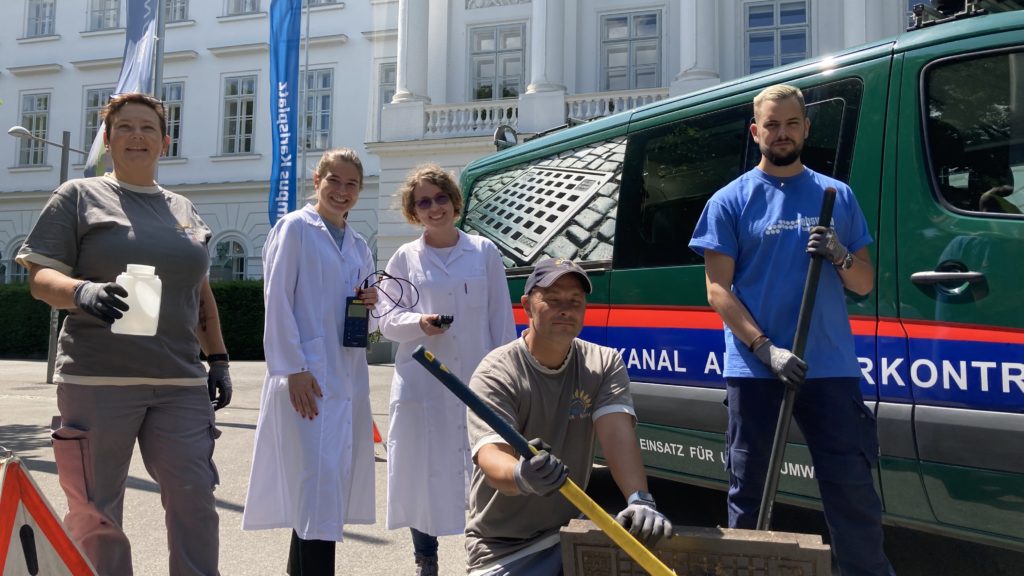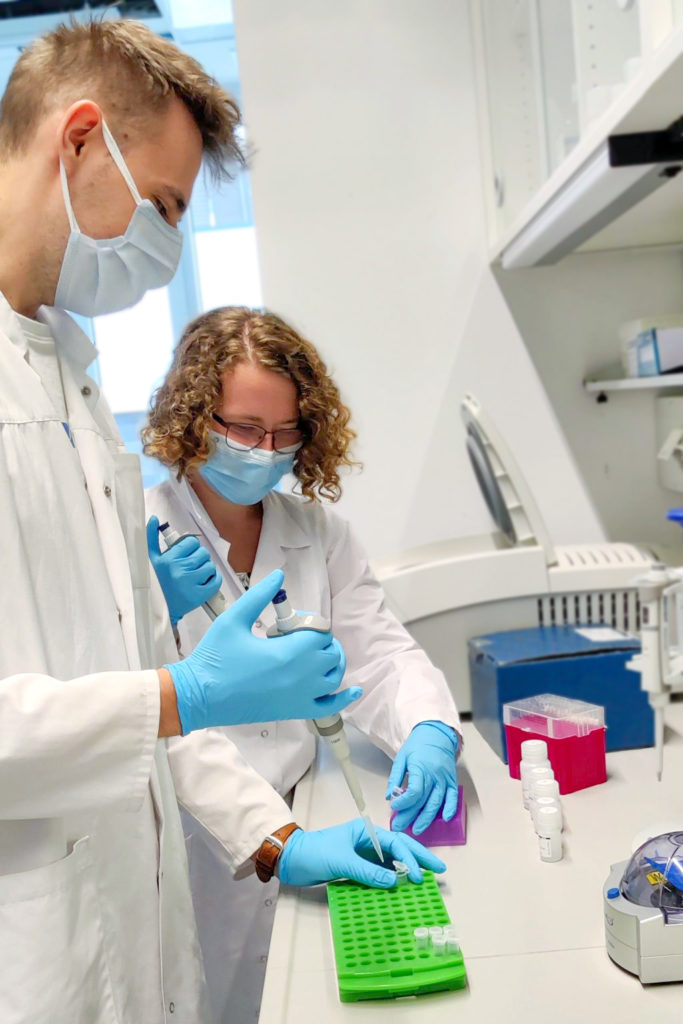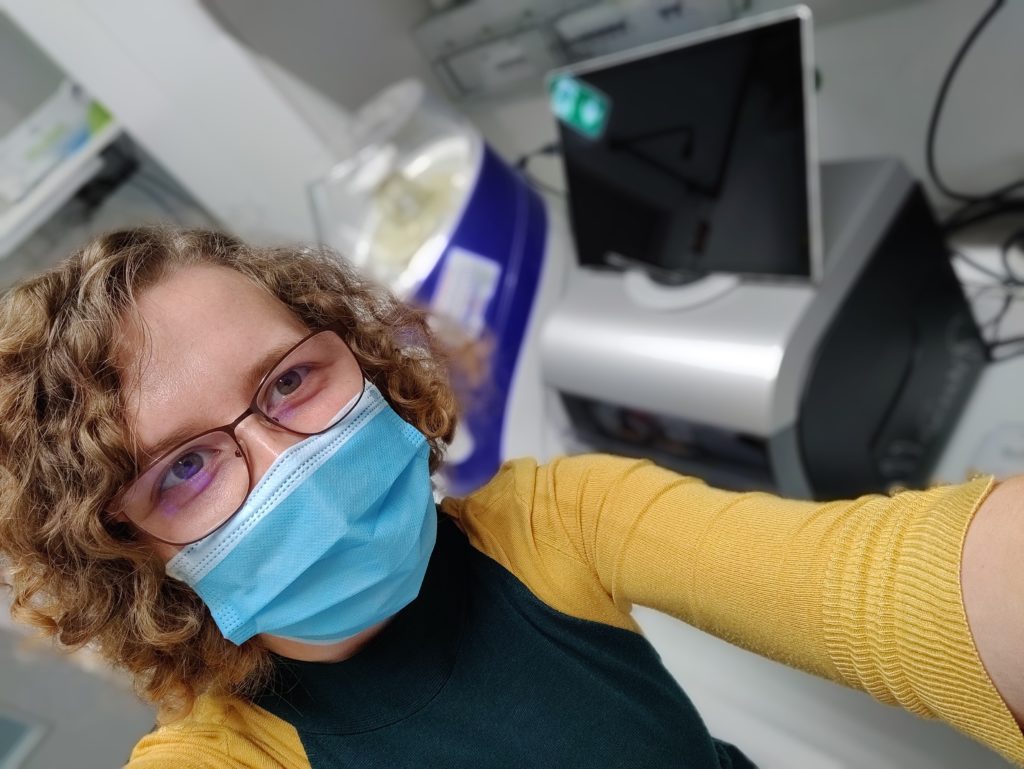
When Kasia Slipko started graduate school at Vienna University of Technology, Institute for Water Quality and Resource Management, she was interested in studying antibiotic resistant microbes in wastewater. For three years, she evaluated different wastewater treatment methods to find out how to remove antibiotic resistant bacteria. But in the spring of 2020, her research took an unexpected turn. That was when the COVID-19 global pandemic hit, caused by the rapid spread of the SARS-CoV-2 virus. Kasia soon found herself at the forefront of another exciting field: using wastewater to monitor viral disease outbreaks.
Monitoring wastewater to detect viral disease is nothing new. It’s been known for decades that viral particles can be detected in human feces even before the individual begins showing symptoms. In Israel, a wastewater surveillance program for monitoring polio outbreaks has been running since 1988.
When the COVID-19 pandemic swept the world in 2020, researchers at the KWR Water Research Institute were the first to find the presence of SARS-CoV-2 viral RNA in wastewater. Their study examined sewage samples collected from six cities in the Netherlands and found that SARS-CoV-2 RNA could be detected up to six days before the first cases were reported. As the prevalence of COVID-19 increased within these cities, the amount of RNA detected also increased in a strikingly similar pattern. They concluded that “sewage surveillance could be a sensitive tool to monitor the circulation of the virus in the population.”

Kasia’s lab, like many others, immediately jumped on this opportunity and shifted their research focus to viral detection of SARS-CoV-2 in wastewater. They reached out to the Netherlands group to learn how to adapt their protocol in their own lab. “Our goal was to establish a method to detect and quantify the SARS-CoV-2 virus in wastewater. We want to be able to detect the changes in the signal to see if the virus is increasing or decreasing in the population. And, in the future, to know if it’s coming back,” she says. “It was very new to us. We have never worked with RNA and viruses before, and there were many new rules that needed to be established in the lab. It took us a lot of time to go through all of it.” For the next few months, Kasia collaborated with other groups to test the protocol, and by August, they had established methods that were reproducible between the groups. “It was a really great success,” she says.
Although the protocol was working, it was extremely slow and tedious. It took three days for them to manually process and analyze each sample. “The manual extraction was really getting crazy, especially when you have 40 samples. It’s constantly opening the tubes, pipetting, closing the tubes, centrifuging and vortexing. It was frustrating,” says Kasia. In September, Promega representative Thomas Voelk contacted them with a potential solution to their problem. It was the Maxwell® RSC Instrument, an automated platform that could extract DNA and RNA from 16 samples at once.
Kasia was skeptical at first. “I thought it was going to be pretty complicated. It’s a fully automated process. A robot. None of us had any experience with that so we weren’t sure how to do it. But after Thomas’ introduction, we tried it on our own and succeeded the first time. It was very easy,” she says. By the end of the month, the Maxwell® Instrument was completely optimized for their samples and everyone in the lab was trained to use it.

Establishing the Maxwell® Instrument in the lab provided numerous benefits for Kasia and her team. First of all, it allowed them to process samples much faster. Now, they can process all their samples from beginning to end in just one day, instead of three days. “We are able to process four times more samples a week, which is amazing!” she says. The hands-off automated process also allowed them to save time on manual labor. “I can run it and prepare another run or do something else in the meantime. It’s really great, especially now when everyone is understaffed. It really improved our workload,” she says.
Not only was the process easier, but the results were better than ever. Using the Maxwell, they found that they were able to extract much more of the virus from each sample. The extraction efficiency increased almost tenfold, from 5–7% to 50–70%! The automated process also eliminated chances for human errors, giving them highly reproducible results.
The data that Kasia’s team generates is key to monitoring and predicting COVID-19 outbreaks in Vienna. When they first began testing smaller wastewater treatment plants around Vienna, they couldn’t detect any SARS-CoV-2 viral RNA. However, as the virus spread over time, they could see the viral RNA gradually increase. Their data correlated very well with the number of people being diagnosed with COVID-19 in the city. In many instances, they were able to predict a rise in cases up to a week before they were confirmed. “We can really predict what is going to happen—if the cases will rise or be stable. With lockdowns, we can see a plateau in the curve and cases slowly going down. That tells us it is safe to reopen,” she says.
The next challenge for Kasia and others is to try to correlate the amount of SARS-CoV-2 RNA with the actual number of people that are infected. This is very difficult because there are many factors that need to be considered. She won’t have to figure it out alone, though. Researchers around the world are collaborating, sharing data and methods on wastewater testing for COVID-19. “So many people switched to COVID research this year. It’s amazing to see how everyone joined forces and worked together to deal with the situation,” she says.
Although Kasia is pleased with her new research focus, she hasn’t forgotten her original project on antibiotic resistance (“It’s like my baby”). When the pandemic subsides, she plans to continue that project. She believes the wastewater samples collected for monitoring COVID-19 may also be useful for understanding antibiotic resistance in wastewater across Austria. Like many of us, she has adapted and conquered during the pandemic, but also cannot help looking ahead and planning for a future in a post-COVID world.
Learn more about using wastewater to monitor SARS-CoV-2 outbreaks.
Read more about wastewater monitoring for viral disease outbreaks here.
Related Posts
Latest posts by Johanna Lee (see all)
- Understanding Persistent Digestive Disorders With Multiplex PCR - August 22, 2024
- Can AI Replace High-Throughput Screens for Drug Discovery? - April 30, 2024
- How Avian Influenza Crosses Species - February 22, 2024
